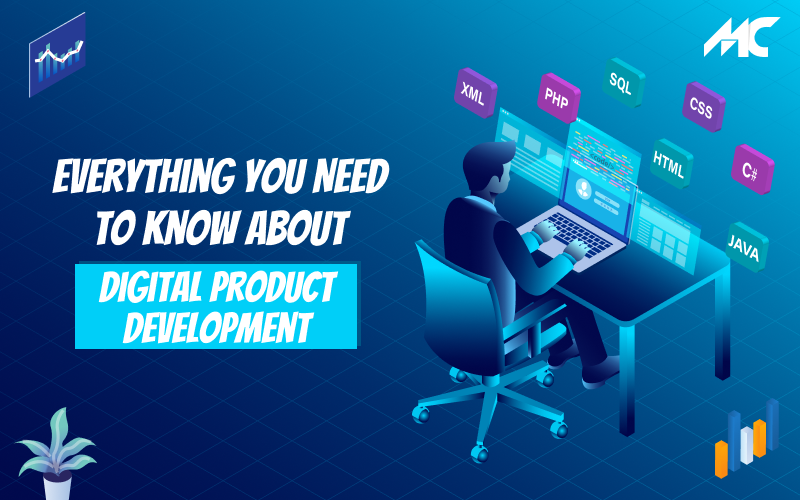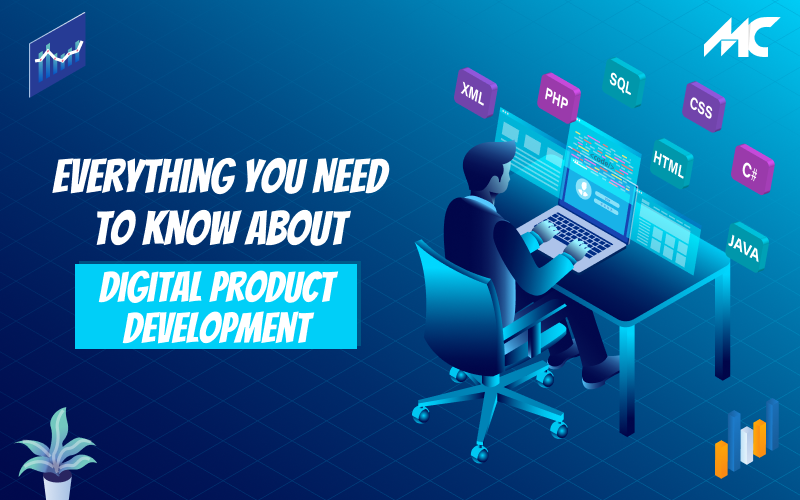Everything You Need To Know About Digital Product Development
Businesses in today’s digital world are constantly looking for new techniques to stay ahead of the competition. The innovation of digital products has become an essential element of this process. Mobile apps, software, and web applications have transformed the way organizations work. They provide a new channel for communicating with consumers and streamlining processes. Above all, this blog will go through digital product development and all you need to know about it.
- Learning About Digital Product Development:
- What is Digital Product Development?
- The Digital Product Development Process
- The Essential First Step in Successful Digital Product Development is the Creation of a Strategy
- Why is Digital Product Development Important?
- Key Features to Include while Development of Digital Products
- Approaches to Developing Digital Products
- Developing Digital Products with a leading Digital Product Developing Company
Learning About Digital Product Development:
Digital product development can be an exciting and rewarding journey. This is true as technology continues to grow rapidly. Here are some key areas you may want to focus on when developing digital products:
- Understanding User Needs: To develop successful digital products, it’s essential to understand the needs and preferences of your target users. This involves conducting market research, analyzing user data, and soliciting feedback from users at various stages of the development process.
- Design Thinking: It’s all about a problem-solving methodology that focuses on empathy, design, and iteration. It’s a valuable framework for digital product development, as it encourages a user-centric approach to design and development.
- Agile Methodology: It is a project management technique that focuses on flexibility, collaboration, and rapid iteration. It is very popular in digital product development, as it enables teams to instantly adhere to changing specifications and deliver products more efficiently.
- User Interface and User Experience Design: The design of a digital product is essential to ensure its success. User interface (UI) design is a process in which the designers have to focus on the visual and interactive components of a digital product. In contrast, User experience (UX) design focuses on the overall user journey and experience. Moreover, learning about UI/UX design principles, tools, and techniques can help you create digital products that are both aesthetically pleasing and easy to use.
- Development Technologies: Developing digital products involves working with various technologies, such as programming languages, frameworks, and software tools. Learning about the latest trends and industry practices in development can assist you to develop scalable, secure, and efficient products.
What is Digital Product Development?
The process of conceiving, constructing, and launching digital merchandise, like software, mobile applications, and web-based applications, is known as digital product development. Moreover, this involves phases such as conceptualization, planning, designing, creating, testing, and launching the final product.
To ensure that the product meets the unique requirements of the business, digital product development services require a team of professionals. The team, which includes product managers, designers, developers, and quality assurance testers, is responsible for ensuring that the product is useful, user-friendly, and achieves corporate goals.
Digital product development companies offer these services to businesses, helping them create and launch digital products that meet their specific needs. Moreover, these companies have the expertise, resources, and tools to create innovative, user-friendly products that meet the needs of the business.
The Digital Product Development Process
The digital product development process involves several stages, each of which is essential to the success of the product. These stages include:
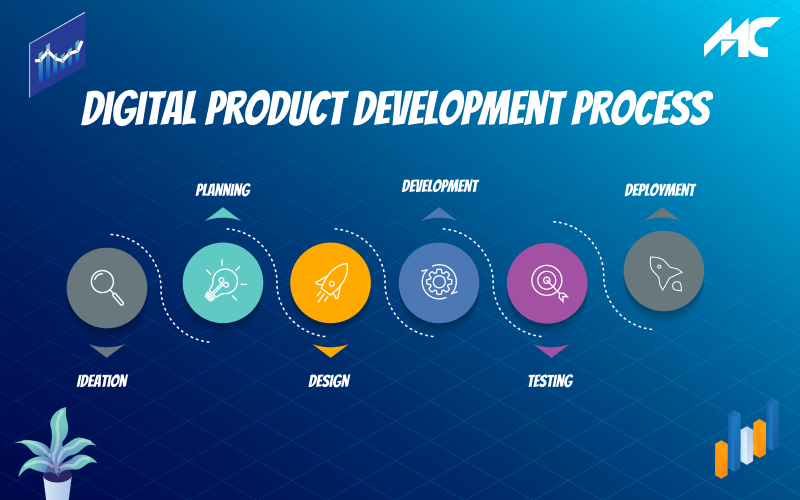
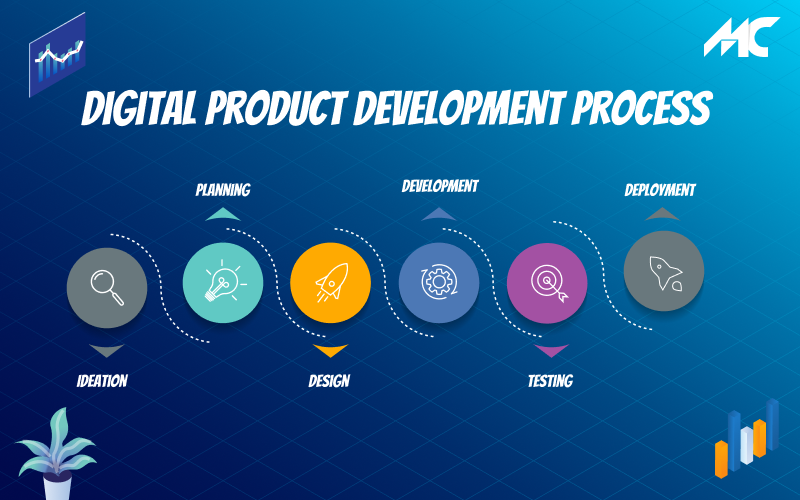
1. Ideation
Nevertheless, only 10% of concepts for digital products become commercially viable items that benefit consumers. Also, the ideation stage aims to determine whether your digital product can escape failure right away. Usually, during this stage, the main emphasis lies in recognizing a problem and formulating an appropriate solution for it. It could involve conceptualization, investigation and analysis, projections, and other tasks. Lastly, the main aim is to prove that your future digital product will be sustainable.
2. Planning
In this stage of the digital product development process, the product team develops a plan that outlines the requirements, features, and functionalities of the product. Additionally, the team also identifies the resources needed for the project, including the technology stack, development tools, and team members.
3. Design
After the planning phase is finished, the design team initiates the development of a user interface that is both aesthetically pleasing and user-friendly in terms of navigation. The designing team also drafts prototypes and wireframes to check the design and certify that it meets the business goals.
4. Development
The development stage involves the actual coding and programming of the product. Above all, it is where the product team brings the design to life, creating the functionality and features to make the product work.
5. Testing
Once the product development is complete, it goes through a variety of tests to certify that it is fully functional, user-friendly, and matches the business requirements. Moreover, the testing team identifies and fixes any bugs or issues before the product is ready for launch.
6. Deployment
The final stage of the product development process is deployment. This is where the product is released to the public, and the marketing team begins promoting it to the target audience.
The Essential First Step in Successful Digital Product Development is the Creation of a Strategy
Developing a solid strategy is a crucial step in the effective development of digital products. Without a clear strategy in place, you may end up building a product that doesn’t meet your goals or provide value to your users. Lastly, here are some key steps to creating a strategy for your digital product development:
1. Define Your Goals
Begin by outlining clear objectives for your digital product. What issue are you trying to solve? What benefits do you desire to provide to your users? How will you attain your business goals? Your goals must be precise, quantifiable, and consistent with your overarching business strategy.
2. Identify Your Target Audience
To effectively develop a digital product, you need to understand your target audience. Identify your user base. What are their requirements, challenges, and actions? Conduct market analysis and collect feedback from users to gain an in-depth comprehension of your intended audience.
3. Conduct a Competitive Analysis
To refine your strategy and positioning, it’s important to analyze your competitors and understand what they offer, as well as their strengths and weaknesses, pricing strategies, and marketing approaches. Thus, by doing so, you can differentiate your product and stand out in the market.
4. Develop a Product Roadmap
Based on your goals, target audience, and competitive analysis, develop a product roadmap that outlines the key features and milestones for your digital product. The implementation of Agile methodologies can aid in dividing the product roadmap into more feasible sections that can be incrementally developed and tested.
5. Determine Technical Requirements
Work with your development team to determine the technical requirements for your product. What technologies will you use? What hardware and software will be necessary? To ensure scalability, security, and performance in all aspects of development, including testing and deployment, a comprehensive approach must be taken. Lastly, to ensure that these objectives are achieved, it is crucial to take into account all facets of development.
6. Test and Iterate
As you develop your digital product, be sure to test and iterate on it regularly. Collect input from both users and stakeholders, and utilize their feedback to guide the course of your development process. Moreover, be open to making changes and pivoting your strategy as necessary to ensure you are meeting your goals and providing value to your users.
Why is Digital Product Development Important?
Digital product development is essential to the success of businesses in today’s digital age. Offering businesses a new means to connect with customers, streamline operations, and maintain a competitive edge, it provides a valuable channel. Based on the research, worldwide spending on digital transformation was estimated to be around $1.5 trillion in 2021, and it is predicted to reach approximately $6.8 trillion by 2023. Finally, here are a few reasons how a digital product development company can help you;
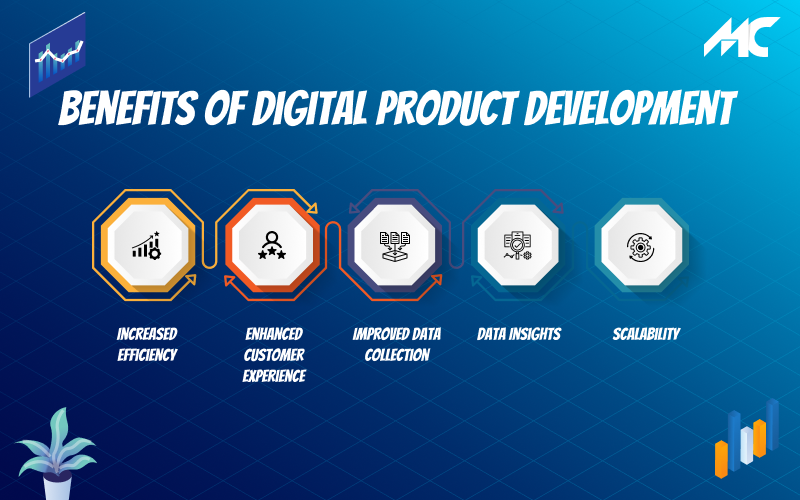
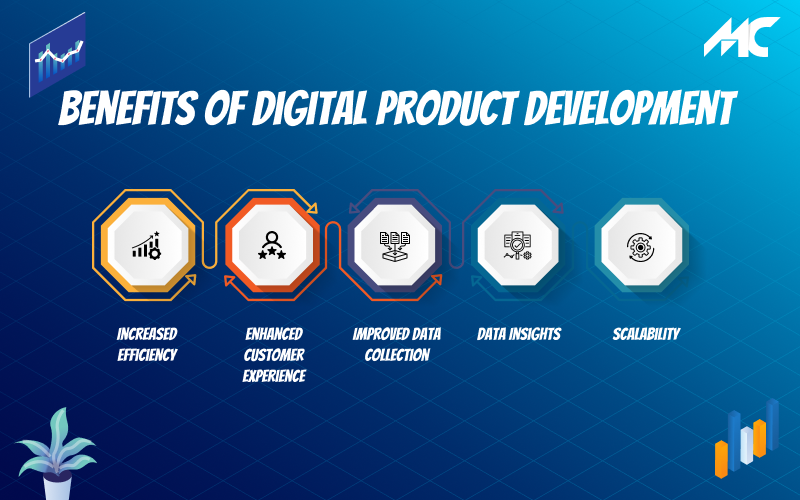
Increased Efficiency: Digital products can streamline business operations, making them more efficient and cost-effective. For example, a web application can automate repetitive tasks, freeing up time for employees to focus on more complex tasks.
Enhanced Customer Experience: Digital products can provide customers with a better experience, making it easier for them to access the products and services they need. For example, a mobile app can provide customers with a convenient way to order products and services, making the process faster and more efficient.
Improved Data Collection: Digital products can collect valuable data that can be used to improve business operations and customer experience. For example, a web application
Competitive Advantage: In today’s hyper-competitive marketplace, businesses that are slow to adopt digital products may find themselves falling behind their rivals. Investing in a digital product development company can enable businesses to maintain a competitive edge and distinguish themselves from their rivals.
Data Insights: The abundance of data and insights on customer behavior and preferences that digital products offer can equip businesses with valuable information. By analyzing this data, businesses can make better-informed decisions about product development, marketing, and overall strategy.
Scalability: The scalability of digital products enables businesses to adjust their offerings to meet changing market conditions and customer demands, without incurring the expenses and risks associated with conventional product development.
Key Features to Include while Development of Digital Products
To ensure the success of a digital product, it’s crucial to consider various key features during the development process. The primary features of digital products include duplicability, measurability, and scalability, whether it’s music, e-books, movies, text/information, or software. Lastly, let us examine this further using music as an example:
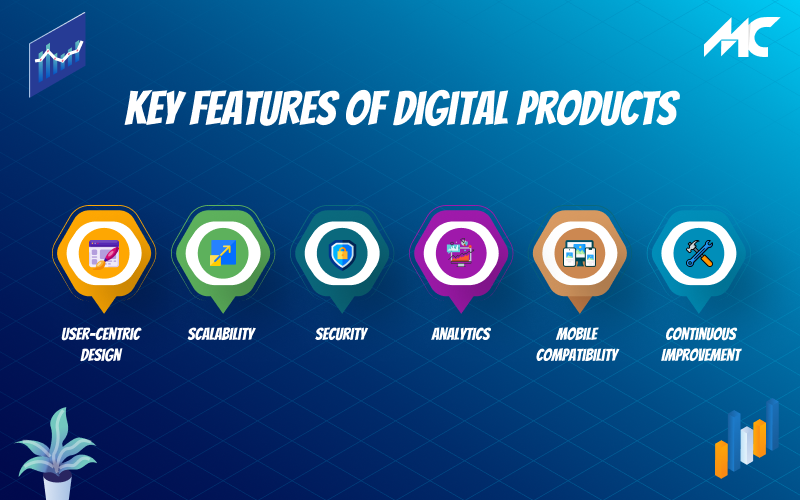
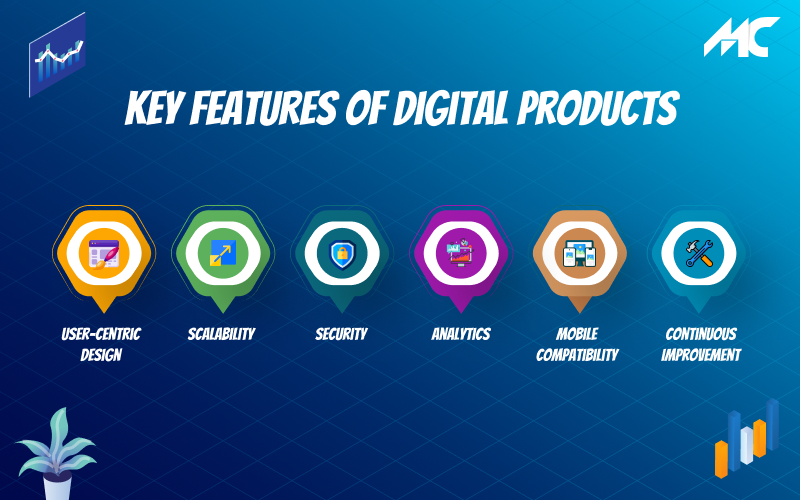
User-Centric Design: Your digital product should be designed with the user in mind, meaning that it should be intuitive, easy to use, and visually appealing. User-centric design involves conducting research on user needs, preferences, and behaviors and incorporating that knowledge into the product design.
Scalability: Your digital product should be able to handle increasing amounts of traffic and data without experiencing significant slowdowns or crashes. To achieve scalability, you may need to consider cloud-based solutions, efficient database management, and the use of load-balancing technology.
Security: It is a crucial consideration in developing digital products, as users entrust their personal information to your product. Make sure your product includes security measures such as encryption, user authentication, and regular security updates to protect against data breaches and cyber-attacks.
Analytics: Analytics can provide valuable insights into user behavior and product performance, allowing you to optimize your product for improved user engagement and business growth. Lastly, consider including analytics tools such as Google Analytics or Mixpanel to monitor user activity and gain valuable data insights.
Mobile Compatibility: With the widespread use of mobile devices, your digital product must be designed with mobile users in mind. This means ensuring that your product is mobile-optimized, with a responsive design that adjusts to various screen sizes and operating systems.
Continuous Improvement: Continual evaluation and improvement are crucial for the development of digital products, as the process is ongoing. Consider implementing user feedback mechanisms, conducting regular testing and analysis, and incorporating new technologies and features to stay ahead of the curve.
Approaches to Developing Digital Products
The development of digital products can be approached in various ways, with each approach presenting its own set of advantages and disadvantages. Lastly, here are some of the commonly used approaches by a digital product development company:
1. Waterfall
The waterfall approach is a linear, sequential approach to product development. The word “waterfall” refers to the top-to-bottom movement, which resembles water falling. Moreover, it involves moving through a series of phases:
- Requirements,
- Design,
- Development,
- Testing,
- Deployment
- Maintenance
For projects with clearly defined requirements and a specific end goal, a waterfall approach is a suitable option. However, it may lack flexibility and not accommodate modifications or updates during the project’s course.
2. Agile
The fundamental principle of Agile in software development is the ability to respond quickly and adapt to change. It is based on breaking up the development cycle into brief periods called iterations. Each job or element of the digital product undergoes these revisions. The method allows many teams to advance simultaneously and significantly reduces time expenditures. Lastly, this is an example of an Agile development process life cycle:
- Concept
- Inception
- Iteration
- Release
- Production
- Retirement
However, it requires close collaboration between team members and can be more difficult to manage than the waterfall approach. Moreover, Agile projects achieve a success rate of 88.2% across all four criteria, while Waterfall projects have a success rate of only 47%.
3. Lean
The Lean approach is customer-centric and aims to create value for customers with minimal waste. The process of Agile in software development includes creating and testing a minimum viable product (MVP), followed by iterative adjustments based on feedback. Ultimately, it’s a great fit for start-ups and new product development, as it allows for quick and cost-effective validation.
4. Hybrid Approach
The hybrid approach to software development combines elements of Agile and Waterfall methodologies. It provides flexibility and adaptability, as well as structure and control. The process of Agile in software development typically encompasses three stages: planning, design, and development.
With each iteration, a functional product is produced, which is then subjected to testing and validation by users. Lastly, the final phase is deployment and maintenance. In this stage, issues are identified and resolved, and updates and improvements are made as necessary for digital product development services.
5. DevOps
DevOps methodology enhances the pace and caliber of mobile app development and deployment by promoting collaboration between development and operations teams. Additionally, it includes automating and streamlining the development and deployment process, as well as ongoing monitoring and maintenance.
Each of these approaches has its own set of advantages and disadvantages, and the selection of the most suitable approach for a project will depend on its specific requirements and constraints. Therefore, it’s crucial to assess each method carefully and choose the one that will most likely result in a successful, high-quality product.
Developing Digital Products with a leading Digital Product Developing Company
If you are ready to digitally transform your business, then consider digital product development services from MobileCoderz. Moreover, we have a complete team of designers, testers, developers, and project managers, who can build industry-leading applications. So if you have any innovative product ideas, then
-

 Mobilecoderz Awarded as India’s Best iPhone App Development Company by Clutch
Mobilecoderz Awarded as India’s Best iPhone App Development Company by Clutch -

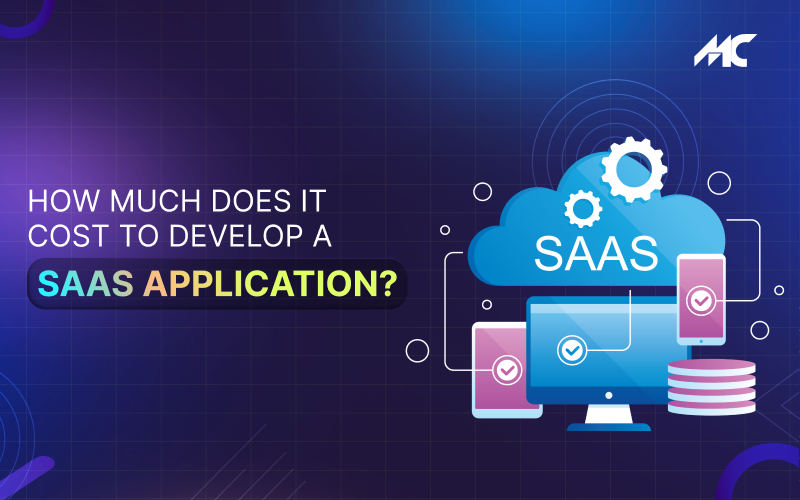 How Much Does It Cost to Develop a SaaS Application?
How Much Does It Cost to Develop a SaaS Application? -

 Mobilecoderz recognized as the Top App Development Company in Saudi Arabia by GoodFirms
Mobilecoderz recognized as the Top App Development Company in Saudi Arabia by GoodFirms




